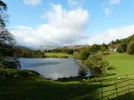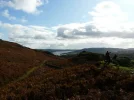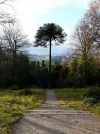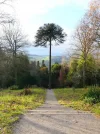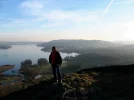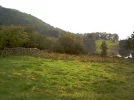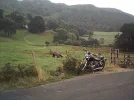Ian
Administrator
- Joined
- Feb 23, 2002
- Messages
- 19,883
- Reaction score
- 1,515
Just to set the scene, I know very little about cameras - mainly as I've had a "point and shoot" until very recently.
One problem that seems to be a common theme with anything I take outside is dark photos. I don't know if that is just due to my bad positioning and the real lighting conditions, or something I can rectify by playing with the settings. I guess it's a bit of both.
I've attached a few examples to show you what I mean.
This one is probably the worst offender, and I don't know how I could capture it so I could actually see the colour of the trees. Because the sky is so bright, most of the rest of the picture is so dark you can't actually make out any detail.

This is the same as the above but to a lesser degree - it was a really bright day so the sky came out fine, but the rest of the image is too dark (considering it was nice and red at the time!).

This one is almost good, but the left hand side is too dark - I guess there's nothing I could set to change that and it's just down to correct positioning though?

Does anyone have any tips on what I can do to prevent this sort of thing happening, do I need to play with ISO settings or the like?
One problem that seems to be a common theme with anything I take outside is dark photos. I don't know if that is just due to my bad positioning and the real lighting conditions, or something I can rectify by playing with the settings. I guess it's a bit of both.
I've attached a few examples to show you what I mean.
This one is probably the worst offender, and I don't know how I could capture it so I could actually see the colour of the trees. Because the sky is so bright, most of the rest of the picture is so dark you can't actually make out any detail.
This is the same as the above but to a lesser degree - it was a really bright day so the sky came out fine, but the rest of the image is too dark (considering it was nice and red at the time!).
This one is almost good, but the left hand side is too dark - I guess there's nothing I could set to change that and it's just down to correct positioning though?
Does anyone have any tips on what I can do to prevent this sort of thing happening, do I need to play with ISO settings or the like?

